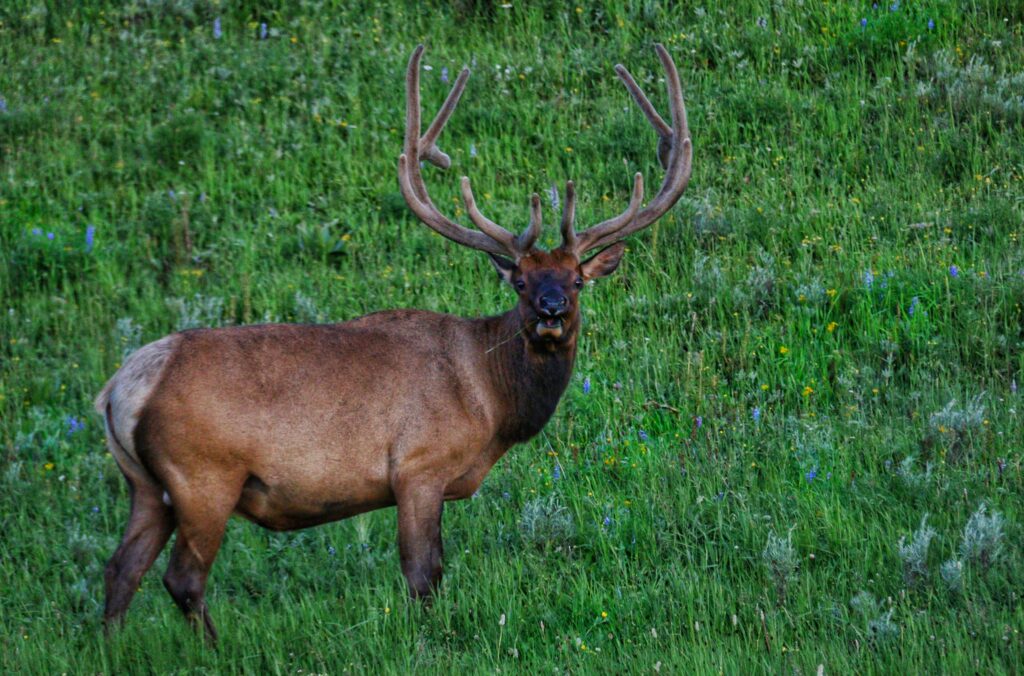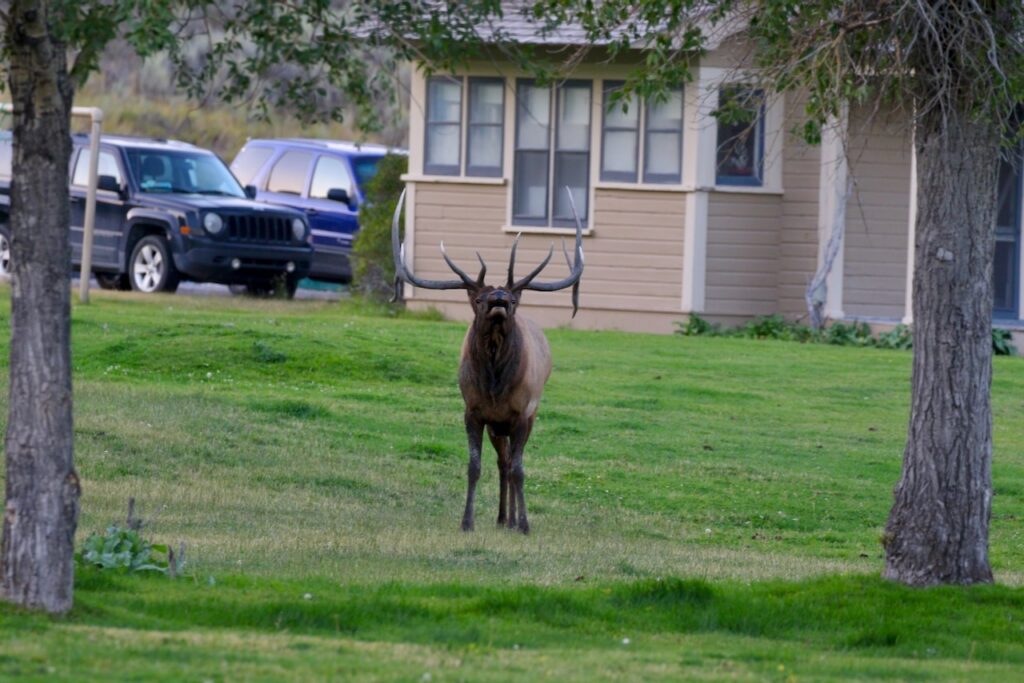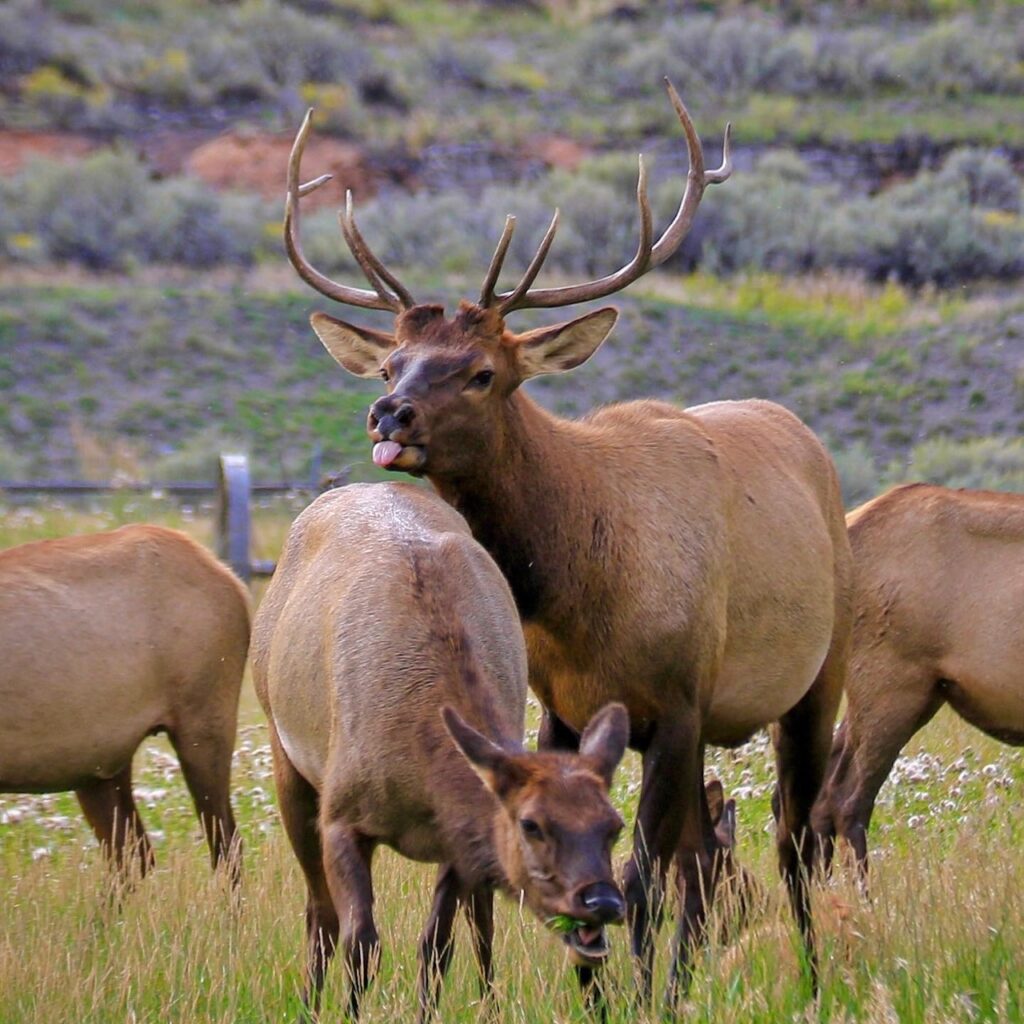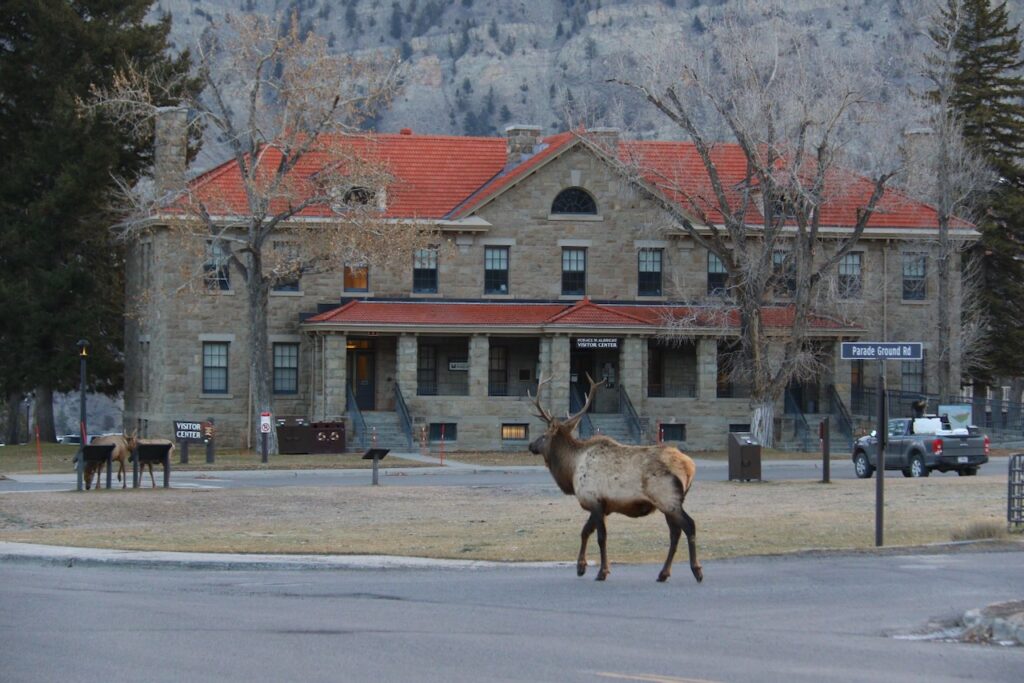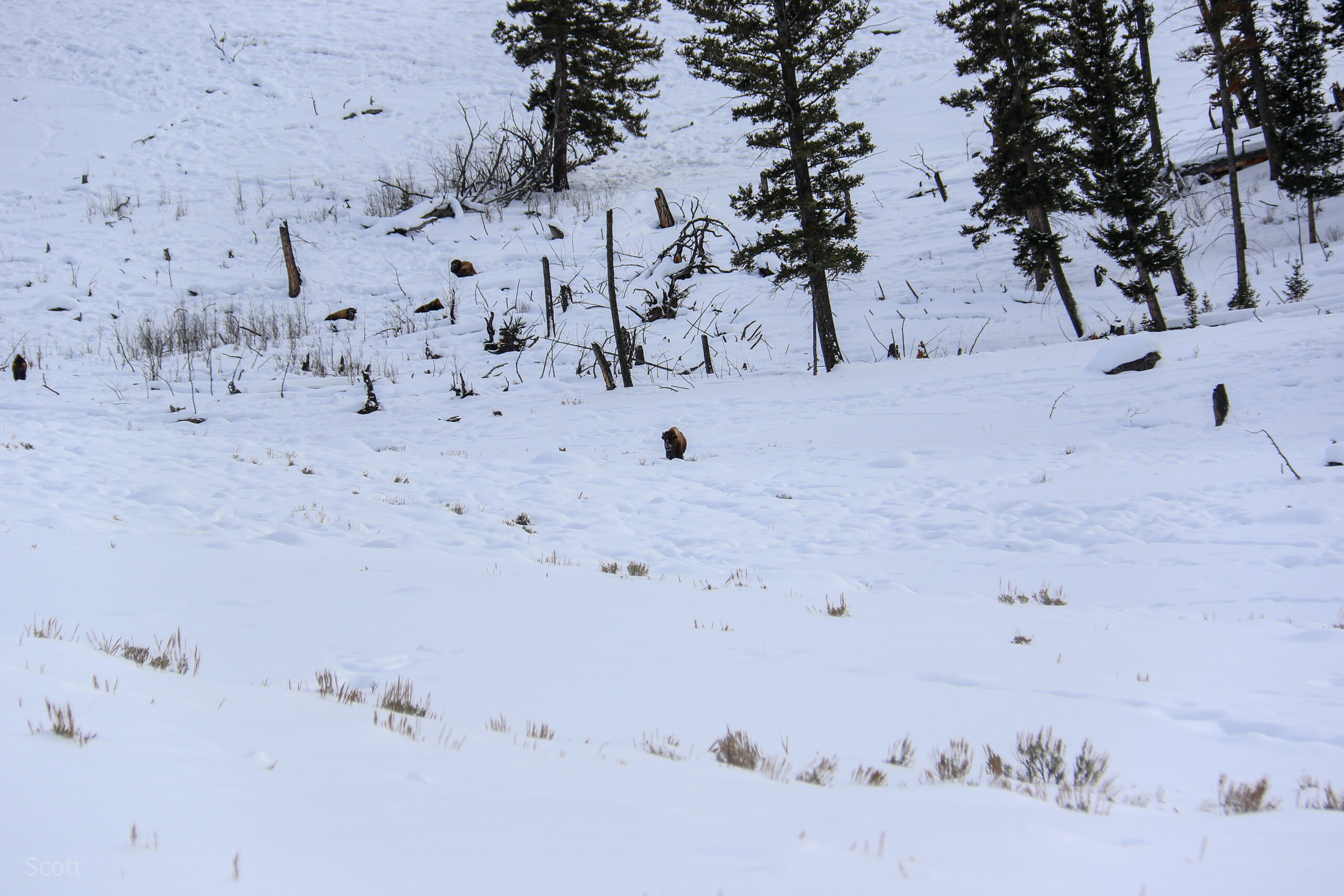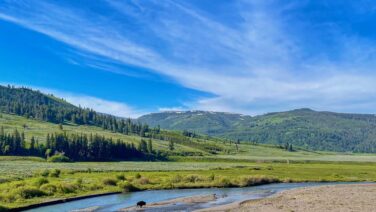As crisp autumn air descends upon Yellowstone National Park each fall, a remarkable and ancient mating ritual unfolds in select corners of the park. This annual event is one of the park’s most captivating wildlife spectacles, drawing nature enthusiasts, photographers, and wildlife lovers from around the world. The elk rut, or mating season, is a time of intense activity, powerful displays, and a symphony of sounds that echo across Yellowstone’s vast landscapes.
Before I jump into details about what the elk rut is and where you can see it, I do want to stress a few very important things.
Always be alert around wildlife, whether in your car or on foot. Elk can, will, and have attacked cars and people in Yellowstone National Park during the rut. It happens almost every year. Bull elk will run at anything, antlers first, that they consider a threat. Elk can run much faster than you on all terrains and can maneuver extremely well. Also, be extremely aware of elk as you leave buildings near where elk rut activities are taking place. You may walk in to get a snack at a dining area and have your exit blocked by an angry and aggressive bull elk. Or you Amy be walking and have a bull elk run from around the building, right at you.
Do not assume that the park’s usual recommeded distance of 25 yards will keep you a safe distance away. Because of this, the park often has staff telling people where they should stand, drive, and even park. More often than not, you will be told to be a greater distance away than 25 yards. Listen to them. Always. The elk rut can be extremely dangerous and your safety while watching elk during this time should be taken seriously. I, and the elk in the park, do not care about your experiences with elk in other places in the country. Show them respect.
What is the Elk Rut?
The elk rut typically occurs from late August to early October in Yellowstone National Park. During this period, bull elk (males) compete for the sexual attention of cow elk (females) and the right to mate. The rut is characterized by a series of behaviors, including bugling, sparring, and herding, all aimed at establishing dominance over other males and securing breeding opportunities with a harem of cow elk.
There are many ways bull elk will try to attract cow elk. The first is visible, with their massive antlers that have been growing since spring. The second is by smell when bull elk will often urinate on the head and antlers to help create an irresistible musk. The third is by making noise, otherwise known as bugling.
Bugling: The Sound of the Rut
One of the most distinctive elements of the rut is the awesome call of the bull elk, known as bugling. This high-pitched, piercing sound can carry for miles across the valleys and forests of Yellowstone. Bugling serves several purposes: it advertises the bull’s presence to potential mates, warns other males of his dominance, and challenges rivals.
The sound starts as a deep, resonant grunt before rising into a high, whistling scream, followed by a series of lower-pitched chuckles. The intensity of the bugle reflects the bull’s strength and vigor. Hearing this call in the wild is an unforgettable experience, evoking the raw power of nature and the primal instincts that drive these magnificent creatures.
Sparring and Combat
As the rut intensifies, competition between bulls escalates. Bulls will engage in sparring matches, where they lock antlers and push against each other in displays of strength. These contests can range from brief skirmishes to more prolonged and intense battles. The goal is to establish dominance and gain control over a harem of cows.
While the overwhelming majority of elk battles are ritualistic and end without serious injury, some battles can result in broken antlers or even fatal wounds. The stakes are high, as the dominant bulls have the opportunity to mate with multiple females, ensuring the continuation of their genetic lineage.
Herding and Guarding
During the rut, dominant bulls gather groups of females, known as harems, which they guard fiercely. They will constantly patrol their territory, chasing off rival bulls and keeping their cows close. This herding behavior is driven by the need to maximize mating opportunities and protect their investment in the harem.
The bulls are in a constant state of alertness, and the energy expenditure during the rut is immense. By the end of the season, many bulls are visibly exhausted and have lost significant body weight. However, the successful bulls are rewarded with the chance to pass on their genes to the next generation of Yellowstone elk.
Best Places to Witness the Elk Rut in Yellowstone
Now that you know a little more about the elk rut, I should probably tell you where you can watch it. Yellowstone National Park provides some of the best opportunities to observe the elk rut in the wild. While elk participating in the rut can and will be found throughout the park, a few locations are particularly well-known for rutting activity:
Mammoth Hot Springs: The grassy areas around Mammoth Hot Springs are a prime location for viewing the elk rut. Here, elk often congregate near the historic buildings and thermal features, providing a unique backdrop for wildlife observation. The bull elk in this area are known for their impressive bugling and large harems. Please follow the ranger’s advice and directions, as well as park in open areas and not on the road.
Madison River: The meadows along the Madison River are another hotspot for elk activity during the rut. Near West Yellowstone, The combination of scenic river views and the presence of rutting elk makes this area a popular destination for photographers and wildlife enthusiasts. Please do not stop on the road when you spot an elk along the Madison River. Always go to a pullout to watch wildlife.
Lamar Valley: Often referred to as the “Serengeti of North America,” Lamar Valley is home to diverse wildlife, including elk. The wide-open spaces of the valley provide excellent visibility for watching the rut at a distance, and the sounds of bugling bulls often echo through the air at dawn and dusk. Keep in mind that the elk watching here will be nowhere near the levels of Mammoth and the Madison.
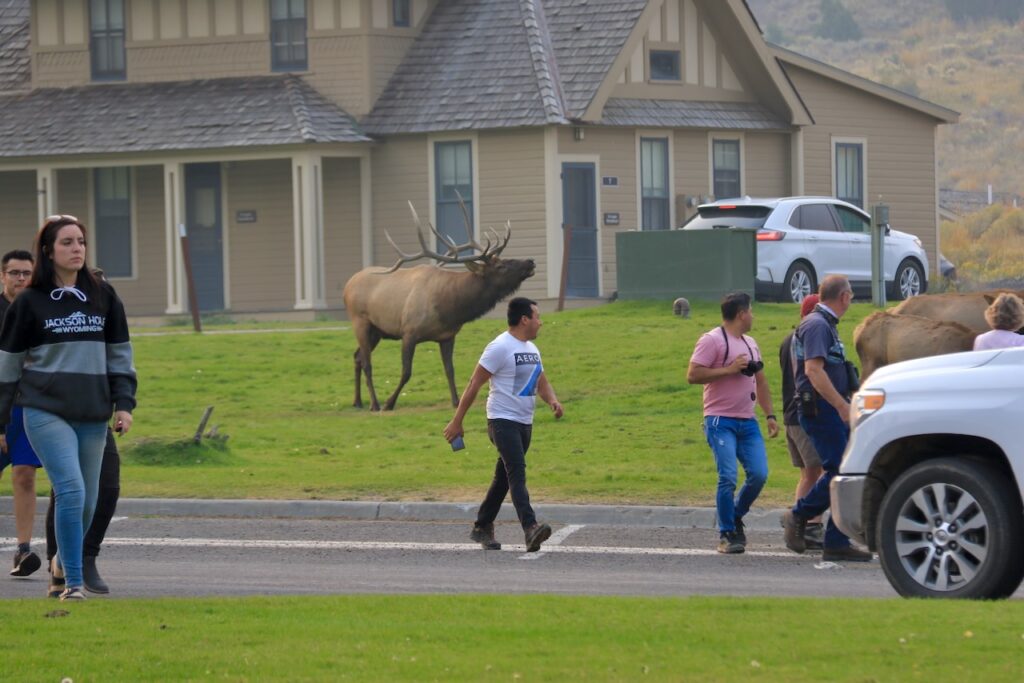
Safety and Etiquette During the Rut
While the elk rut is a captivating event, it’s essential to remember that these animals are wild and can be unpredictable, especially during this time of heightened aggression. Bulls are particularly territorial and can become dangerous if approached too closely.
Visitors to Yellowstone should always maintain a safe distance from the elk, using binoculars or a telephoto lens to observe them without disturbing their natural behavior. The National Park Service recommends staying at least 25 yards away from elk, though even greater distances are advisable during the rut.
In addition, visitors should avoid imitating elk sounds, as this can provoke bulls and disrupt their natural behavior. Respect for the animals and their environment is crucial to ensuring that the rut remains a safe and sustainable wildlife experience.
Finally
The elk rut in Yellowstone National Park is a breathtaking reminder of the beauty and drama of the natural world. From the incredible bugle that echoes across the landscape to the fierce battles for dominance, the rut is a time of primal energy and ancient rituals. For those lucky enough to witness it, the elk rut offers a deeper connection to Yellowstone’s wild spirit and a glimpse into the life cycle of one of its most iconic species. Whether you’re a seasoned wildlife observer or a first-time visitor, experiencing the elk rut is sure to be an unforgettable adventure.
Just remember to keep your distance and always be alert.
Become a Wildlife Watching Expert in Yellowstone
Embark on a captivating journey through the untamed beauty of Yellowstone National Park with my guidebook, “Wildlife Watching Yellowstone.” Immerse yourself in the awe-inspiring landscapes and learn the secrets of one of nature’s greatest spectacles. This guide is your passport to a world where bison roam freely, grizzlies majestically traverse the terrain, and elusive wolves play their part in the delicate balance of the ecosystem.
Whether you’re an avid nature enthusiast or a first-time explorer, this meticulously crafted guidebook will unlock the wonders of Yellowstone’s wildlife, offering insights into their behavior, habitats, and the best spots for unforgettable encounters. Let the pages come alive with vivid descriptions, stunning photographs, and expert tips, inviting you to witness the magic of the natural world in all its glory. Seize the opportunity to create lasting memories and deepen your connection with the wilderness – “Wildlife Watching Yellowstone” is your key to unlocking the wonders of this iconic national treasure.


